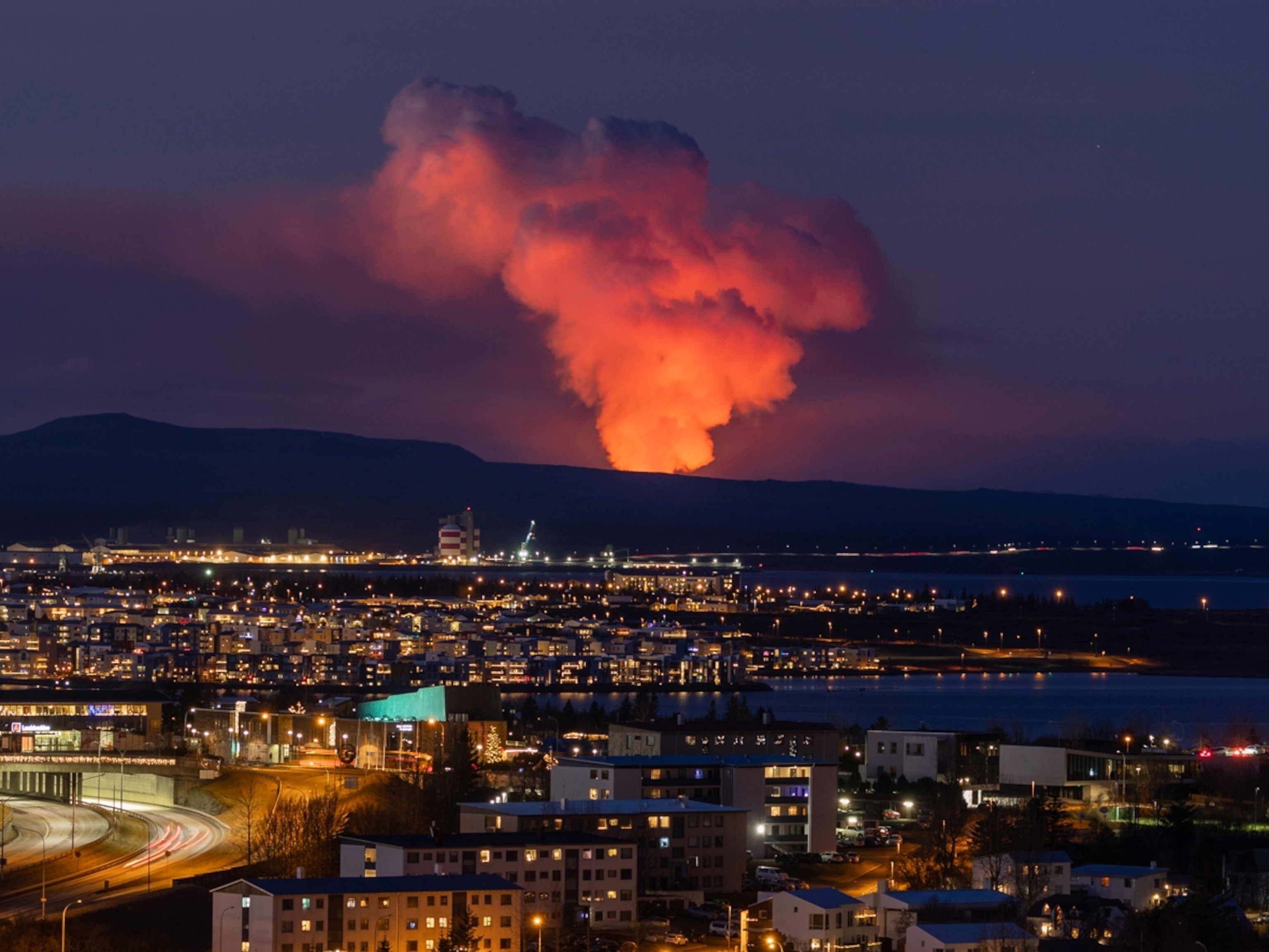
Magma Chamber Surprisingly Close to Hawaii's Surface?
Lava source found within two miles of surface, research suggests.
A giant magma chamber burning beneath the Hawaiian Islands is closer to the surface than any other magma chamber yet measured—as little as 1.9 to 2.5 miles (3 to 4 kilometers) below the surface, scientists say.
But Hawaiians don't need to worry about plunging into the magma below, say, during an earthquake—two miles of solid rock is more than enough to keep that from happening, according to geology undergraduate Julie Ditkof, who presented the findings December 14 at a meeting of the American Geophysical Union in San Francisco.
Ditkof, of Ohio State University, determined the chemical composition of crystals in a thousand samples of volcanic rock taken from Hawaii's most volcanically active regions, the Big Island (map) and an adjacent undersea volcano called Loihi. (Pictures: America's Ten Most Dangerous Volcanoes.)
Using a method developed in Iceland—another volcanic island—by Michael Barton, Ditkof's advisor and research partner at Ohio State, she paid particular attention to olivine, the first mineral in Earth's crust to crystallize as temperatures and pressures drop.
The ratios of certain elements in each olivine sample told her how deep the lava had been when it left the magma chamber and began crystallizing—and therefore the depth of the magma itself, said Ditkof, whose findings have not been published in a peer-reviewed journal.
(Related: "New Magma Layer Found Deep in Earth's Mantle?")
Heated Debate
The magma-depth discovery may settle a longstanding debate.
In 2008 workers doing exploratory drilling for a geothermal plant reported that they had accidentally broken through to a shallow magma chamber near the Big Island's Kilauea volcano.
Even after the incident, though, scientists were unsure as to the general depth of the magma chamber, or chambers, that produce most of the Big Island's lava, as magma is called once it hits the surface.
Some prior studies of other minerals in Hawaiian volcanic rock, for example, had suggested that the local lava comes from as deep as perhaps 11 to 25 miles (18 to 40 kilometers) down.
But seismic studies appeared to show magma chambers at much shallower depths—about 1.2 to 3.7 miles (2 to 6 kilometers).
"We wanted to prove one right or one wrong," Ditkof said.
Magma to Power Hawaii?
The discovery of magma so close to the surface suggests that Hawaii might have a good, fairly accessible source of alternative energy.
That could be good news for the state, which generates 90 percent of its power from imported oil, "resulting in electricity that costs five times more than the national average," according to Scientific American.
Ditkof said, "Very shallow magma chambers mean there is a very shallow geothermal heat source that could be tapped," for example to generate steam to power turbines in electrical plants, she said.
"If someone could utilize that, you have amazing geothermal potentials."
Related Topics
You May Also Like
Go Further
Animals
- How scientists are piecing together a sperm whale ‘alphabet’How scientists are piecing together a sperm whale ‘alphabet’
- Orangutan seen using plants to heal wound for first timeOrangutan seen using plants to heal wound for first time
- What La Palma's 'lava tubes' tell us about life on other planetsWhat La Palma's 'lava tubes' tell us about life on other planets
- This fungus turns cicadas into zombies who procreate—then dieThis fungus turns cicadas into zombies who procreate—then die
Environment
- This floating flower is beautiful—but it's wreaking havoc on NigeriaThis floating flower is beautiful—but it's wreaking havoc on Nigeria
- What the Aral Sea might teach us about life after disasterWhat the Aral Sea might teach us about life after disaster
- What La Palma's 'lava tubes' tell us about life on other planetsWhat La Palma's 'lava tubes' tell us about life on other planets
- How fungi form ‘fairy rings’ and inspire superstitionsHow fungi form ‘fairy rings’ and inspire superstitions
- Your favorite foods may not taste the same in the future. Here's why.Your favorite foods may not taste the same in the future. Here's why.
- Are the Great Lakes the key to solving America’s emissions conundrum?Are the Great Lakes the key to solving America’s emissions conundrum?
History & Culture
- These were the real rules of courtship in the ‘Bridgerton’ eraThese were the real rules of courtship in the ‘Bridgerton’ era
- A short history of the Met Gala and its iconic looksA short history of the Met Gala and its iconic looks
- Meet the ruthless king who unified the Kingdom of Hawai'iMeet the ruthless king who unified the Kingdom of Hawai'i
- Hawaii's Lei Day is about so much more than flowersHawaii's Lei Day is about so much more than flowers
Science
- Why ovaries are so crucial to women’s health and longevityWhy ovaries are so crucial to women’s health and longevity
- Orangutan seen using plants to heal wound for first timeOrangutan seen using plants to heal wound for first time
Travel
- Why this unlikely UK destination should be on your radarWhy this unlikely UK destination should be on your radar




